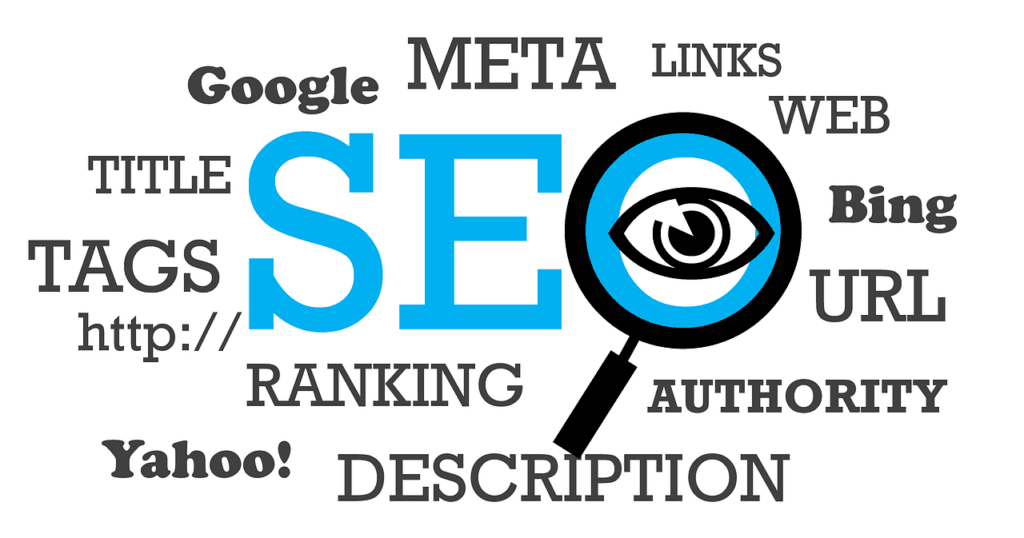This Article has been revised, edited and added to, by Poulomi Chakraborty.
- The Power of User-Generated Content: Why It Matters
- Building Trust and Authenticity
- Cost-Effective Marketing
- Insights and Feedback
- Deepening Customer Engagement through Personal Stories
- Enhancing Brand Perception through Authentic Advocacy
- Crafting a Community-Led Brand Growth Strategy
- Integrating UGC into Multi-Channel Marketing
- Fostering Innovation and Adaptation through User Feedback
- Unlocking SEO Potential: The Role of Customer Keywords
- Bridging the Gap Between Brand and Consumer Language
- Boosting Content Freshness
- Enhancing Local SEO
- Tailoring Content to User Language for Enhanced Engagement
- Optimizing for Voice Search and Question-Based Queries
- Strategic Positioning of Customer Keywords in Technical SEO
- Enhancing User Experience by Aligning Keywords with User Intent
- Continuous Learning and Evolution from UGC Insights
- Strategies for Encouraging User-Generated Content
- Integrating UGC Keywords into Your SEO Strategy
- Content Analysis and Keyword Extraction
- Enhancing Content with UGC Keywords
- On-Page SEO Adjustments
- Developing a Content Adaptation Framework
- Enhancing Semantic Search Capabilities
- Leveraging UGC for Structured Data Enhancement
- Prioritizing Mobile Optimization with UGC
- Continuous Monitoring and Optimization
- Navigating Challenges: Ensuring UGC Quality and Relevance
- Moderation and Quality Control
- Encouraging Detailed Feedback
- Handling Negative UGC
- Establishing Comprehensive Content Guidelines
- Implementing Tiered Moderation Systems
- Leveraging Machine Learning for Content Validation
- Cultivating a Self-Policing Community
- Continuous Education and Feedback for Contributors
- Beyond Reviews: Tapping into Diverse UGC Avenues
- Amplifying the Reach of User-Generated Content
- In Conclusion: UGC as the Bedrock of Organic Growth
In an age where authenticity and personal touch have become the cornerstones of digital success, startups are increasingly turning to their most valuable assets: their customers. User-generated content (UGC), from reviews and testimonials to social media shoutouts, isn’t just a testament to a startup’s efficacy; it’s a goldmine for SEO. The real-world language, phrases, and keywords that customers use can significantly enhance a brand’s online visibility.
Diving into the world of UGC, we’ll uncover how startups can seamlessly integrate customer keywords into their SEO strategy, forging a unique path to digital dominance. This isn’t just about algorithms and rankings—it’s about understanding and celebrating the voice of the customer.
The Power of User-Generated Content: Why It Matters

Before diving deep into the keyword dimension, let’s understand the unparalleled value UGC brings to startups.
Building Trust and Authenticity
- Real Voices, Real Impact: Today’s savvy consumers often trust fellow customers over polished brand messages. Genuine reviews or user testimonials can significantly elevate a startup’s credibility.
- Showcasing Success Stories: Through UGC, potential customers get a glimpse of real-life applications and successes of a product or service.
Cost-Effective Marketing
- Free Promotion: Happy customers often become brand ambassadors, sharing their positive experiences across platforms, providing free visibility.
- Organic Reach Boost: Platforms like Facebook and Instagram prioritize UGC, allowing startups to reach wider audiences without investing in paid promotions.
Insights and Feedback
- Understanding Pain Points: Negative reviews or feedback, while not always pleasant, offer direct insights into areas of improvement.
- Product Development: UGC can inspire new features, products, or services, catering directly to what the customer base desires.
Deepening Customer Engagement through Personal Stories
User-generated content (UGC) does more than just validate the effectiveness of a startup’s offerings; it engages customers on a personal level, transforming them from passive consumers into active participants in the brand narrative. When customers share their personal stories and experiences, it creates a multi-dimensional view of the product’s impact on real lives.
For startup founders, fostering an environment where such stories are encouraged can dramatically deepen customer engagement. Encouraging users to not only share product reviews but also their personal journeys or challenges that the product helped overcome, can create a powerful emotional connection with potential customers.
Enhancing Brand Perception through Authentic Advocacy
While UGC amplifies trust and authenticity, its power to reshape brand perception is often underestimated. Startups can strategically use UGC to position themselves as customer-centric brands.
By highlighting how real customers are benefiting from their products or services, startups can subtly influence public perception, making their brand synonymous with positive customer outcomes. It’s crucial to showcase these authentic voices across various marketing channels to reinforce the brand’s identity as one that listens to and values its customers.
Crafting a Community-Led Brand Growth Strategy
Building a community around a brand can turn sporadic customers into loyal advocates. A strategy that involves the customers in the evolution of the product not only improves the product but also builds a committed user base.
Startups should consider creating dedicated spaces for users to interact, share their experiences, and provide feedback directly to the founders and product developers. This approach not only leverages UGC but also instills a sense of ownership among customers, leading to higher retention rates and a community eager to promote the brand organically.
Integrating UGC into Multi-Channel Marketing
In today’s fragmented media environment, integrating user-generated content into a multi-channel marketing strategy can increase its reach and effectiveness. Startups should look beyond their websites and social media and consider how UGC can be featured in email marketing, digital ads, and even offline campaigns.
Sharing powerful customer testimonials in a targeted email campaign, for example, can resonate more deeply with potential customers than traditional sales content. Similarly, featuring user reviews and stories in video ads can enhance credibility and humanize the brand in ways that scripted ads cannot.
Fostering Innovation and Adaptation through User Feedback
User-generated content is a goldmine for insights that can drive innovation. By analyzing the content created by users, startups can identify unmet needs and emerging trends. This ongoing feedback loop allows startups to adapt quickly, develop new features, or even pivot their business model based on real-time customer input.
This strategy not only ensures the product remains relevant but also demonstrates a commitment to meeting customer needs, which can differentiate a startup in a competitive market.
Unlocking SEO Potential: The Role of Customer Keywords
While UGC offers multiple benefits, one often overlooked aspect is its SEO potential, especially when focusing on the natural language and keywords used by customers.
Bridging the Gap Between Brand and Consumer Language
- Real-World Terminology: Brands often use industry jargon or polished language, while customers might use simpler, everyday terms. UGC bridges this gap.
- Uncovering Long-Tail Keywords: User reviews or comments can reveal specific long-tail keywords that the startup might not have considered.
Boosting Content Freshness
- Dynamic Updates: Regular user reviews or comments keep a webpage dynamic, signaling to search engines that the content is regularly updated.
- Diverse Content: Different users bring varied perspectives, ensuring a rich diversity of content on a platform.
Enhancing Local SEO
- Local Terminologies: Users from specific regions might use localized terms or references, enhancing local SEO prospects.
- Local Reviews: For startups with a physical presence, reviews on platforms like Google My Business can significantly boost local search visibility.
Tailoring Content to User Language for Enhanced Engagement
The incorporation of customer keywords into content not only improves SEO but significantly enhances user engagement. Startups should consider how the natural language used by their customers can guide the creation of content that feels more personalized and directly responsive to user needs.
This strategy involves a detailed analysis of user-generated content to identify not just keywords but phrases and topics that are gaining traction among the community. By aligning content creation with these insights, startups can produce articles, videos, and other content forms that directly address the current interests and concerns of their audience, increasing the relevance and engagement of their material.
Optimizing for Voice Search and Question-Based Queries
With the rise of digital assistants and voice search, optimizing content with customer keywords extends beyond traditional search engine queries. Users often utilize more conversational language in voice searches than they do in typing a search into a browser.
By analyzing user-generated content, startups can pick up on these conversational patterns and directly apply them to optimize for voice search. This includes framing content around questions that users are likely to ask in a natural setting, which can be crucial for appearing in voice search results and providing the exact answers that potential customers are seeking.
Strategic Positioning of Customer Keywords in Technical SEO
The technical aspect of SEO can significantly benefit from the strategic placement of customer-derived keywords. Beyond integrating these keywords into body text, titles, and meta descriptions, startups should consider their placement in alt texts for images, headers, and even URLs.
This approach helps search engines better understand the context of the content and how it relates to user queries, which can improve the accuracy of search result listings and boost the overall visibility of the startup’s digital assets.
Enhancing User Experience by Aligning Keywords with User Intent
Understanding user intent is critical in tailoring content that not only ranks well but satisfies the needs of users. By leveraging customer keywords, startups can get a clearer picture of what users expect when they search for specific terms. This insight allows for the creation of a user journey on the website that aligns with expected actions, whether it’s seeking information, looking to make a purchase, or needing customer support.
Enhancing user experience by mapping content and keywords to user intent not only improves SEO rankings but also increases conversion rates as users find exactly what they need with less friction.
Continuous Learning and Evolution from UGC Insights
The landscape of user-generated content is dynamic, reflecting the evolving language and interests of a brand’s audience. Startups should establish a routine of continuous learning from their UGC to stay ahead of changes in user language and SEO trends.
This involves regular audits of UGC to extract fresh keywords, understanding shifts in language use, and adapting content strategies to align with these trends. The agility to evolve based on user content can give startups a distinct advantage, maintaining relevance and visibility in a competitive digital environment.
Strategies for Encouraging User-Generated Content

Harnessing the power of UGC starts with motivating users to create content. While some will naturally take the initiative, most will need a nudge.
Create Engaging Platforms
- Review Sections: Ensure your website or e-commerce platform has a user-friendly section for reviews. Make the process of leaving a review as straightforward as possible.
- Community Forums: Platforms like Reddit or even dedicated forums on your site can encourage users to discuss, share experiences, and provide feedback.
Incentivize Content Creation
- Contests and Giveaways: Encourage users to share photos, reviews, or stories related to your product or service with the promise of rewards.
- Loyalty Points: Offer points or discounts to users who leave reviews or participate in discussions, which they can redeem later.
Spotlight User Content
- Feature Reviews: Regularly showcase top reviews or user stories on your main page or in newsletters.
- Social Media Shares: Share UGC on your brand’s social media platforms, giving credit to the original creators. This not only builds trust but also motivates others to share their own content.
Cultivating an Interactive Brand Persona
For startups, developing an interactive brand persona on social media and other digital platforms can significantly stimulate the creation of user-generated content (UGC). By engaging directly with users in a conversational style and responding to comments and posts, startups can foster a friendly and accessible brand image that encourages more users to share their experiences and feedback.
It’s not just about pushing content to users but pulling them into discussions, asking open-ended questions, and showing genuine interest in their stories. This approach helps in building a community around the brand that feels valued and eager to contribute.
Leveraging User-Centric Events
Creating events centered around users and their experiences can also serve as a powerful driver for generating UGC. Startups might host virtual roundtables, webinars, or live Q&A sessions where customers can share their experiences and insights.
These events not only provide content that can be repurposed across various channels but also make the users feel integral to the brand’s ecosystem. By highlighting their stories and opinions during these events, startups can effectively amplify their content’s reach and impact, encouraging other users to participate and share.
Implementing Advanced Content Recognition Technologies
To further encourage UGC, startups can implement technology solutions that make creating and sharing content easier for users. For example, using image recognition software on platforms where users can upload photos can help in tagging and organizing content, making it more searchable and interactive.
Similarly, natural language processing tools can assist in generating automatic responses or categorizing text-based content, enhancing user interaction and engagement. These technologies not only facilitate the creation of UGC but also help in managing and leveraging this content more effectively.
Creating a Feedback-Rich Environment
Establishing a feedback-rich environment is essential for motivating users to generate content. This involves more than just asking for feedback; it requires showing that the startup is listening and acting on that feedback.
When users see that their suggestions and reviews are taken seriously and can lead to real changes or improvements, they are more likely to continue contributing. Startups should communicate back to users how their input has influenced the product or service, turning the feedback loop into a visible process of growth and enhancement.
Building Partnerships for Co-Created Content
Startups should consider building partnerships with influencers, thought leaders, or other brands that align with their values and customer base to co-create content. These partnerships can lead to the development of unique content that combines the strengths and audiences of both parties, significantly enhancing the reach and diversity of UGC.
Co-created campaigns or content series can drive engagement and participation from wider audiences, multiplying the sources of user-generated content while also bringing fresh perspectives and credibility to the brand.
Integrating UGC Keywords into Your SEO Strategy
Once you have a steady stream of UGC, it’s time to extract those valuable customer keywords and weave them into your SEO fabric.
Content Analysis and Keyword Extraction
- Regular Audits: Periodically analyze user reviews, comments, and discussions to extract common phrases or terms.
- Use Tools: SEO platforms like Ahrefs or SEMrush often have features to analyze content and highlight recurring keywords.
Enhancing Content with UGC Keywords
- Blog Posts: Use customer keywords to inspire and create blog topics. For instance, if many users are discussing a specific feature of your product, a detailed blog post about it can be valuable.
- FAQs: UGC can reveal common queries or concerns customers have. Expand your FAQ section based on these insights, incorporating customer keywords for better search visibility.
On-Page SEO Adjustments
- Meta Tags: If certain terms or phrases are frequently used by customers, consider integrating them into your meta tags.
- Product Descriptions: Update product or service descriptions based on how users describe them. This can make the content more relatable and search-friendly.
Developing a Content Adaptation Framework
Integrating user-generated content (UGC) keywords into an SEO strategy requires a structured approach that can adapt dynamically to the ever-changing landscape of customer language. Startups should develop a framework that facilitates the continuous scanning, analysis, and incorporation of UGC keywords into various types of content.
This framework involves setting up automated systems to detect and categorize new keywords and phrases from UGC in real-time. It also means ensuring there is a process in place for quickly adapting these findings into existing content strategies, such as updating blog posts, rewriting product descriptions, and adjusting ad copy to reflect the latest user language trends.
Enhancing Semantic Search Capabilities
To leverage UGC for SEO, startups need to enhance their semantic search capabilities. This means understanding the context in which keywords are used by customers, not just the keywords themselves. By employing advanced SEO techniques such as latent semantic indexing and using tools that analyze the relationship between words and phrases, startups can develop content that aligns more closely with the user’s intent.
Semantic search optimization ensures that content does not just contain the right keywords but is structured and presented in a way that search engines deem most relevant to user queries, thereby improving the content’s visibility and ranking.
Leveraging UGC for Structured Data Enhancement
Structured data markup is a critical aspect of SEO that startups can enhance with UGC keywords. By incorporating UGC keywords into structured data elements such as product descriptions, reviews, and FAQs on their web pages, startups can provide search engines with more detailed information about the content of their pages.
This not only helps in better indexing of the content but also enhances the appearance of search results, increasing the likelihood of clicks due to richer snippets that might include star ratings, price ranges, and other user-relevant information.
Prioritizing Mobile Optimization with UGC
With the increasing prevalence of mobile searches, startups must ensure that their content, enriched with UGC keywords, is optimized for mobile devices. This includes making sure that web pages are responsive, load quickly on mobile devices, and that content featuring UGC keywords is prominently displayed and easily navigable on smaller screens.
Mobile optimization also involves tailoring content to the mobile user’s context, such as including location-based UGC keywords for on-the-go searches, which can significantly improve local SEO efforts.
Continuous Monitoring and Optimization
Finally, the integration of UGC keywords into an SEO strategy is not a set-and-forget process. It requires continuous monitoring and optimization to remain effective. Startups should regularly review the performance of their UGC-enriched content to see how it ranks and performs in terms of user engagement.
Tools like Google Analytics and Google Search Console can provide insights into how well pages are performing and help identify opportunities for further optimization. Regularly updating content to reflect new UGC keywords and user trends will help maintain its relevance and effectiveness in search rankings.
Navigating Challenges: Ensuring UGC Quality and Relevance

UGC, while powerful, is also unpredictable. Startups need to ensure the content aligns with brand values while also being SEO-relevant.
Moderation and Quality Control
- Review Filters: Implement automated filters to catch and prevent spam or irrelevant content.
- Manual Oversight: Consider having a team or individual periodically review UGC to ensure it aligns with brand guidelines and offers value.
Encouraging Detailed Feedback
- Guided Questions: Instead of a generic “Leave a Review” prompt, guide users with questions. For example, “What did you like most about our product?” or “How did our service improve your daily routine?”
- Rating Systems: Alongside written feedback, allow users to rate specific features or aspects. This can provide more granular insights.
Handling Negative UGC
- Responsive Approach: Always address negative reviews or feedback professionally. Offering solutions or clarifications can turn a dissatisfied customer into a loyal one.
- Feedback Loop: Use negative UGC as a constructive tool. If certain issues recur in feedback, it’s a clear signal that that area needs improvement.
Establishing Comprehensive Content Guidelines
To ensure the quality and relevance of user-generated content, startups need to establish comprehensive content guidelines that clearly outline what constitutes acceptable and valuable UGC. These guidelines should cover aspects such as the tone of the content, the type of language used, and the thematic boundaries.
By making these guidelines readily accessible and easy to understand, startups can help steer the creation of UGC in a direction that aligns with their brand values and marketing objectives. This proactive approach not only maintains the quality of content but also minimizes the risk of inappropriate or off-brand UGC that could damage the company’s reputation.
Implementing Tiered Moderation Systems
While automated filters can catch and prevent a lot of inappropriate or irrelevant content, adding a tiered human moderation system can significantly enhance the quality control process. This system could involve initial automated checks followed by layers of human review, particularly for content that is flagged by users or by the automation as potentially problematic.
This approach ensures that the content not only meets basic standards but also aligns with the nuanced expectations of the brand. It can be particularly effective in handling complex issues such as cultural sensitivity, which automated systems may not fully grasp.
Leveraging Machine Learning for Content Validation
Advancements in machine learning offer startups a powerful tool to ensure the relevance and quality of UGC. By training machine learning models on examples of high-quality UGC, startups can automate the process of content validation to a large extent.
These models can analyze incoming UGC for patterns that match previously identified high-quality content, making real-time decisions about whether content should be published, flagged for review, or rejected. This not only speeds up the moderation process but also helps maintain a consistent standard of content quality.
Cultivating a Self-Policing Community
Creating a community environment where users feel responsible for the quality of content can be an effective way to manage UGC. Encouraging users to report inappropriate content and to engage in community policing can significantly reduce the burden on the startup’s moderation team.
To foster this environment, startups can recognize and reward users who consistently contribute positively and help enforce community standards. This not only keeps the quality of content high but also builds a stronger, more engaged community.
Continuous Education and Feedback for Contributors
To maintain the relevance and enhance the quality of UGC, startups should invest in the continuous education of their user base. This could involve regular updates about how to create valuable content, feedback on submitted content, and tips on how to better align with the brand’s goals.
Providing feedback, especially constructive criticism, helps users understand better what is expected of them and how they can improve their contributions. This ongoing dialogue between the startup and its user base helps elevate the overall quality of the content over time.
Beyond Reviews: Tapping into Diverse UGC Avenues

UGC isn’t just about reviews. Tapping into its diverse forms can provide a wealth of keywords and insights.
Social Media Mentions
- Monitor Brand Mentions: Tools like Brand24 or Mention can help track when users discuss your startup on platforms like Twitter or Instagram.
- Engage and Encourage: Always acknowledge mentions, and encourage users to share their experiences or stories related to your brand.
User Forums and Discussion Boards
- Active Participation: Be an active member of forums where your users hang out. Not only can you gather valuable feedback, but also directly engage with your customer base.
- Community Building: Consider building your own forum or community platform, giving users a space to discuss, share, and collaborate.
Exploring Visual and Audio Content as UGC
In a digital landscape dominated by visual and audio media, startups can greatly benefit from encouraging the creation of user-generated visual content like photos and videos, as well as podcasts and audio testimonials.
Visual content, particularly videos, can dramatically enhance engagement and is highly shareable, which can help increase brand visibility on platforms such as Instagram, YouTube, and TikTok. Similarly, audio content, including user-generated podcasts or audio reviews, can tap into the growing audience of podcast listeners and those who prefer auditory content over text.
Encouraging users to create and share this type of content not only diversifies the type of UGC but also expands the reach of the brand into new and varied audience segments.
Leveraging Interactive and Real-Time UGC
Startups can harness the power of interactive UGC by facilitating real-time interactions, such as live-streaming events where users can participate and contribute content on the fly. Platforms like Twitch, YouTube Live, and Instagram Live offer opportunities for users to engage directly with brands and share their experiences and thoughts in real time.
This type of UGC creates a sense of immediacy and authenticity, providing potential customers with unfiltered insights into the brand and its community. Moreover, real-time feedback during these events can be invaluable for quick iterations and improvements.
Utilizing User-Generated Content in Product Development
Another innovative avenue for leveraging UGC is involving users directly in product development processes. Startups can encourage users to submit ideas for new features, designs, or even entirely new products.
This not only generates a wealth of ideas but also makes users feel deeply connected to the brand, as they see their suggestions being considered and possibly implemented. Platforms like ideation forums or dedicated co-creation spaces can facilitate this type of UGC, providing a structured way for users to contribute directly to the brand’s evolution.
Harnessing UGC for Virtual and Augmented Reality Experiences
With the rise of virtual and augmented reality technologies, there is a growing opportunity for startups to encourage UGC that utilizes these technologies. Users can create VR or AR content that showcases how they use a product in a virtual environment or how a service fits into their daily lives.
This not of UGC can be particularly impactful in industries like real estate, education, and gaming, where immersive experiences add significant value to the user. Encouraging content creation in these formats can not only enhance user engagement but also provide startups with unique content that showcases their products in innovative ways.

Related: Check out our free SEO suite

Amplifying the Reach of User-Generated Content
Having rich UGC is great, but maximizing its visibility can further enhance its SEO and engagement benefits.
Collaborations with Influential Users
- Spotlight User Stories: If a user has a particularly compelling experience or story related to your product, consider collaborating for a detailed feature or interview.
- Influencer Partnerships: Users with a significant online following can amplify the reach of their content related to your startup. Engaging in partnerships or campaigns can be beneficial.
UGC-Based Campaigns
- Hashtag Campaigns: Encourage users to share content under a specific hashtag. Monitor and promote the best content.
- Challenge Campaigns: Platforms like TikTok or Instagram are ripe for challenge-based campaigns, where users create content around a specific theme or action related to your product.
User Content Galleries
- Website Integration: Feature a section on your website where the best UGC is displayed. This not only showcases user satisfaction but also enriches your site with fresh content.
- Interactive Elements: Allow other users to vote, comment, or share these featured pieces, enhancing engagement.
Integrating UGC Across Digital Marketing Channels
To maximize the impact of user-generated content, startups should look beyond social media and consider how UGC can be integrated across all digital marketing channels.
This includes embedding user testimonials and reviews on product pages to enhance credibility, using user-created videos in email marketing campaigns to increase engagement, and incorporating UGC into digital advertisements to make them more relatable and effective.
By creating a cohesive UGC strategy that spans multiple channels, startups can ensure that the authentic voices of their users are heard across every touchpoint, thereby amplifying the reach and influence of their content.
Developing Dynamic UGC Campaigns

Startups can increase the visibility and impact of UGC by developing dynamic campaigns that encourage ongoing content creation and sharing. This could involve thematic seasonal campaigns, where users are prompted to share how they use products in different contexts or during specific events.
These campaigns can be timed to coincide with relevant cultural or seasonal events, creating a natural incentive for users to participate and share. By keeping UGC campaigns fresh and aligned with current trends or events, startups can maintain user interest and engagement throughout the year.
Leveraging Content Aggregation Tools
To further enhance the reach of UGC, startups can utilize content aggregation tools that curate and display user-generated content from various sources in a single, engaging feed on their websites or social media platforms.
These tools can filter and showcase the best UGC, making it easy for visitors to view and interact with a wide array of content, from user reviews and photos to videos and blog posts. By centralizing UGC, startups not only highlight the breadth of their community engagement but also encourage more users to contribute, seeing the visibility that their content can gain.
Fostering Collaborations with Content Creators
Partnering with influential content creators who can generate high-quality UGC can dramatically boost the content’s reach and appeal. These creators often have large followings and the ability to produce professional-level content that resonates with wider audiences.
Startups can collaborate on special projects, co-create content, or feature these creators in marketing initiatives to tap into their audience base and lend additional credibility and polish to their UGC efforts. Such collaborations can be particularly effective in reaching new market segments and enhancing brand perception.
Enhancing Search Visibility of UGC
Ensuring that user-generated content is optimized for search engines is critical in amplifying its reach. This involves not only incorporating relevant keywords but also ensuring that UGC is included in site maps, tagged appropriately, and featured in structured data where possible.
Additionally, encouraging users to create content around specific, search-friendly topics can help increase the chances that their contributions will rank well in search results, bringing more organic traffic to the startup’s digital platforms.
In Conclusion: UGC as the Bedrock of Organic Growth
In the digital tapestry where brands and users coexist, user-generated content stands out as a beacon of authenticity and engagement. For startups, this isn’t just about boosting online visibility or improving SEO rankings. It’s about building a community, understanding real-world user language, and forging a path of growth rooted in genuine user experiences.
The digital age has democratized content creation. Everyone is a creator, a reviewer, a storyteller. By recognizing and harnessing this, startups can navigate the crowded digital space with the compass of user voices guiding them.
Read Next
- How User Intent Affects Keyword Targeting Strategy (Hot Take!)
- How to Use Social Media to Boost SEO Performance
- How to Create an SEO-Friendly URL Structure
- How to Retarget Your Website Visitors on Facebook
- How to Retarget Your Website Visitors on LinkedIn





















Comments are closed.